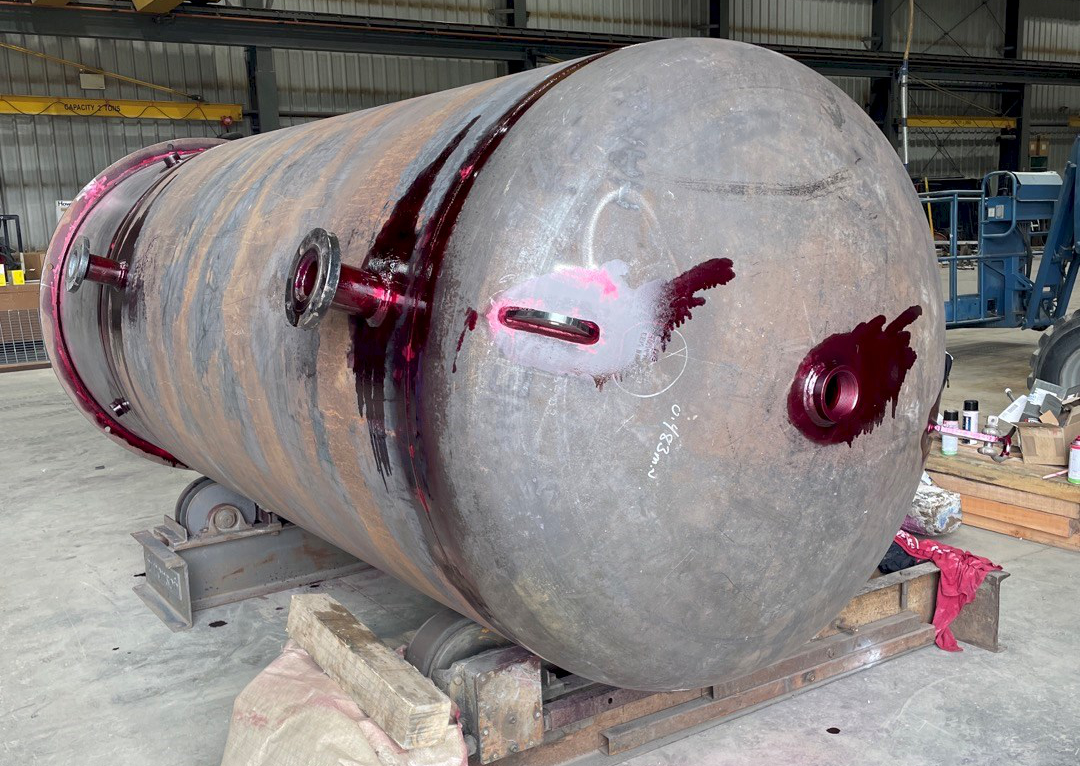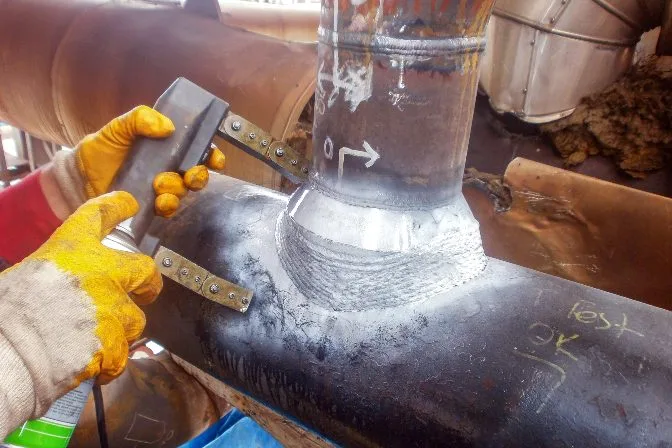Exactly How Tank Welding Inspection Avoids Future Structural Failures
Exactly How Tank Welding Inspection Avoids Future Structural Failures
Blog Article
A Detailed Summary of Tank Welding Evaluation Criteria and Methodologies for Improved Weld Quality and Performance
The relevance of welding examination standards in the production of containers can not be overstated, as they offer as the backbone for ensuring weld stability and operational dependability. Various evaluation strategies, including visual assessments and progressed non-destructive screening techniques, are important in determining prospective flaws that could endanger efficiency.
Value of Welding Assessment Criteria

Welding evaluation standards incorporate a variety of requirements, including material requirements, welding procedures, and credentials of personnel associated with the welding procedure. By imposing these criteria, companies can methodically identify and remedy possible problems, therefore reducing the probability of costly repair work or disastrous failures. Additionally, extensive inspection methods cultivate a culture of responsibility and accuracy, encouraging welders to preserve high degrees of workmanship.

Common Welding Evaluation Methods


Ultrasonic Examining (UT) is an additional common method, utilizing high-frequency acoustic waves to find interior problems that may not show up externally. This technique is especially efficient for determining gaps or incorporations within the weld steel. Magnetic Particle Testing (MT) is additionally widely utilized, particularly for ferromagnetic materials, as it discloses surface and near-surface defects through the application of electromagnetic fields and ferrous particles.
Additionally, Fluid Penetrant Screening (PT) detects surface-breaking flaws by using a penetrant to the weld and afterwards utilizing a designer to extract the penetrant. Each of these techniques adds to a detailed evaluation approach, making sure that welds fulfill the stringent quality criteria needed in container building.
Governing Standards and Compliance
Governing standards and conformity are necessary components in making certain the safety and integrity of welded structures in container construction - Tank Welding Inspection. These criteria serve to develop minimum requirements for material residential or commercial properties, welding treatments, and evaluation practices, therefore lowering the risk of architectural failings and enhancing general efficiency
Key organizations, such as the American Culture of Mechanical Designers (ASME) next page and the American Welding Society (AWS), offer standards that are widely adopted in the market. Conformity with these standards not only makes sure adherence to ideal practices but likewise fulfills legal and legal obligations, securing the passions of stakeholders.
Regulatory bodies typically mandate adherence to details codes, such as ASME Code Area IX for welding qualifications and API 650 for bonded storage tanks. These codes detail requirements for welding methods, certifications of employees, and screening approaches to verify weld integrity.
Regular audits and evaluations are important to keeping conformity, as they aid identify variances from developed i was reading this standards. Non-compliance can lead to significant penalties, task hold-ups, and safety hazards. Thus, a robust understanding of regulatory standards and a dedication to conformity are extremely important in attaining high-quality and durable bonded container frameworks.
Non-Destructive Evaluating Techniques
How can the integrity of bonded frameworks be ensured without triggering damage? Non-destructive testing (NDT) methods supply a durable option, allowing inspectors to evaluate weld top quality without endangering the material - Tank Welding Inspection. Among one of the most usual NDT methods are ultrasonic testing (UT), radiographic screening (RT), magnetic bit testing (MT), and dye penetrant screening (PT)
Ultrasonic screening employs high-frequency sound waves to identify interior defects and characterize product residential properties. It supplies accurate dimensions and is particularly efficient for thick products. Radiographic testing entails passing X-rays or gamma rays with the weld, creating photos that expose structural flaws such as fractures or gaps. This technique is indispensable for assessing the honesty of complicated welds.
Magnetic bit screening is suited for ferromagnetic products, where magnetic fields disclose surface and near-surface stoppages. Dye penetrant screening makes use of a fluid dye to highlight surface-breaking flaws, making it an efficient approach for non-porous materials.
Each of these NDT approaches has distinct advantages, enabling extensive analyses tailored to particular products and welding processes. By executing these strategies, industries can make sure the integrity and safety of welded frameworks, ultimately enhancing general efficiency.
Enhancing Weld Quality With Assessment
Reliable evaluation plays a vital duty in enhancing weld quality, acting as a crucial checkpoint in the manufacture process. By identifying prospective flaws early, examinations minimize the risk of compromised structural stability and make sure conformity with sector criteria. Using check my reference a mix of visual evaluations, non-destructive screening (NDT) approaches, and mechanical analyses, assessors can detect issues such as porosity, cracks, and incomplete fusion.
Implementing a robust inspection protocol not only improves the overall quality of welds but additionally cultivates a society of liability amongst welders and makers. Routine training and accreditation of assessment workers make sure that they are geared up with the required skills to identify and attend to prospective issues efficiently. This proactive approach decreases rework and linked expenses, eventually contributing to project performance.
In addition, detailed paperwork of evaluation searchings for gives useful insights right into reoccuring problems, helping with continuous renovation in welding methods. By leveraging advanced modern technologies, such as automated ultrasonic testing or digital radiography, weld quality can be improved through extra accurate evaluations. In verdict, an extensive inspection procedure is important in achieving high-grade welds, making sure safety, integrity, and longevity in container construction.
Verdict
In conclusion, the implementation of rigorous tank welding evaluation requirements and techniques is essential for guaranteeing weld stability and performance. By utilizing a combination of visual evaluations, non-destructive testing techniques, and adherence to regulative criteria, companies can effectively identify and reduce prospective flaws.
Report this page